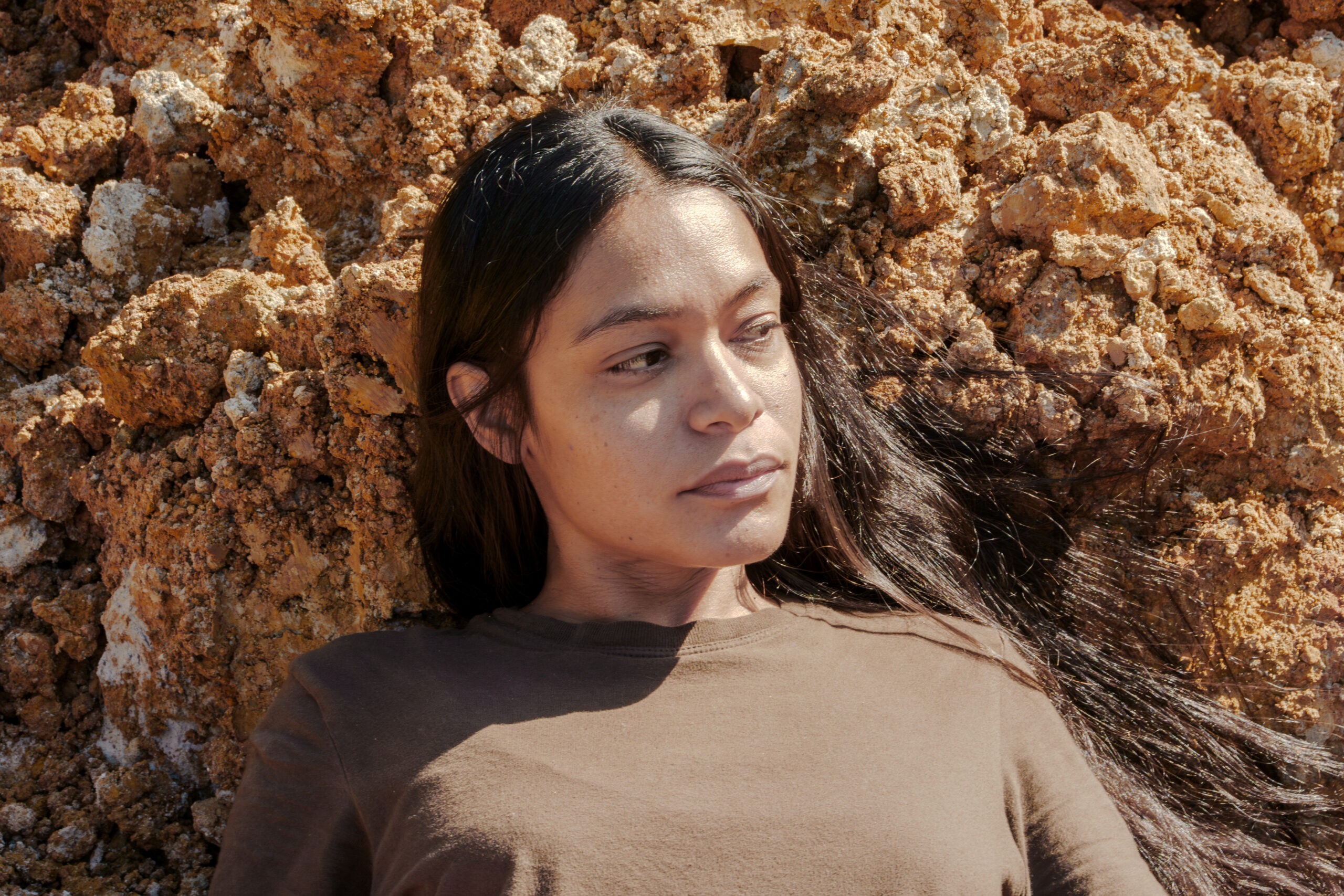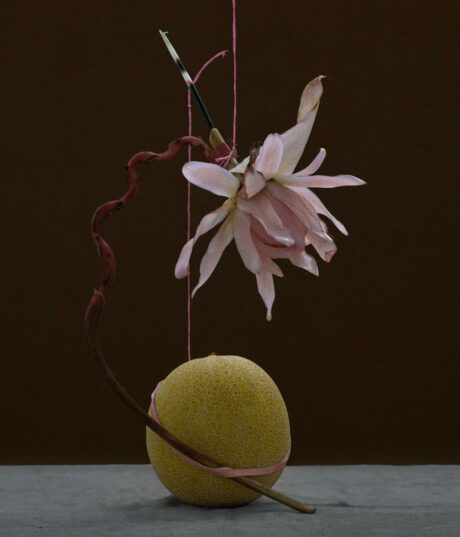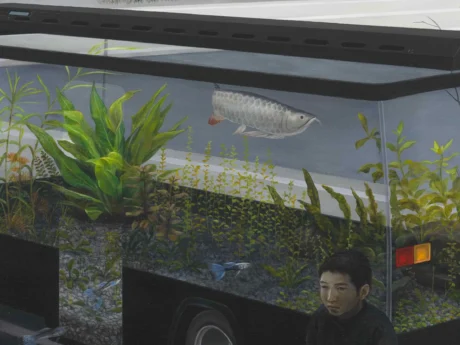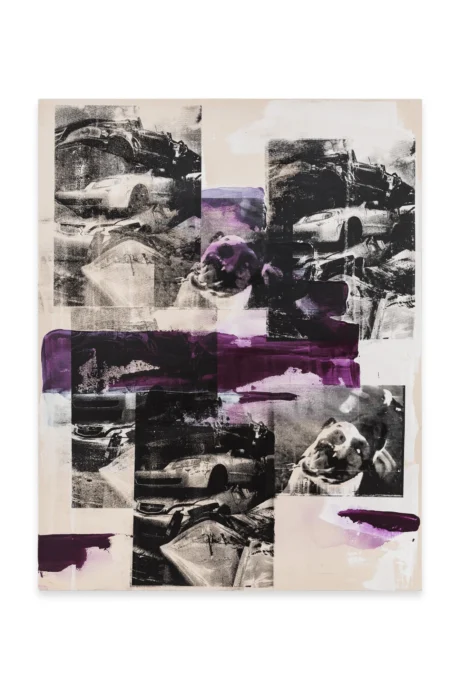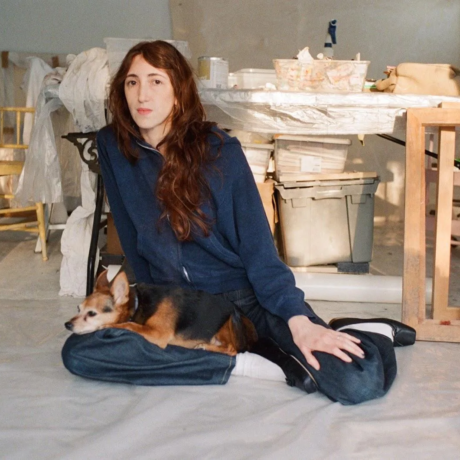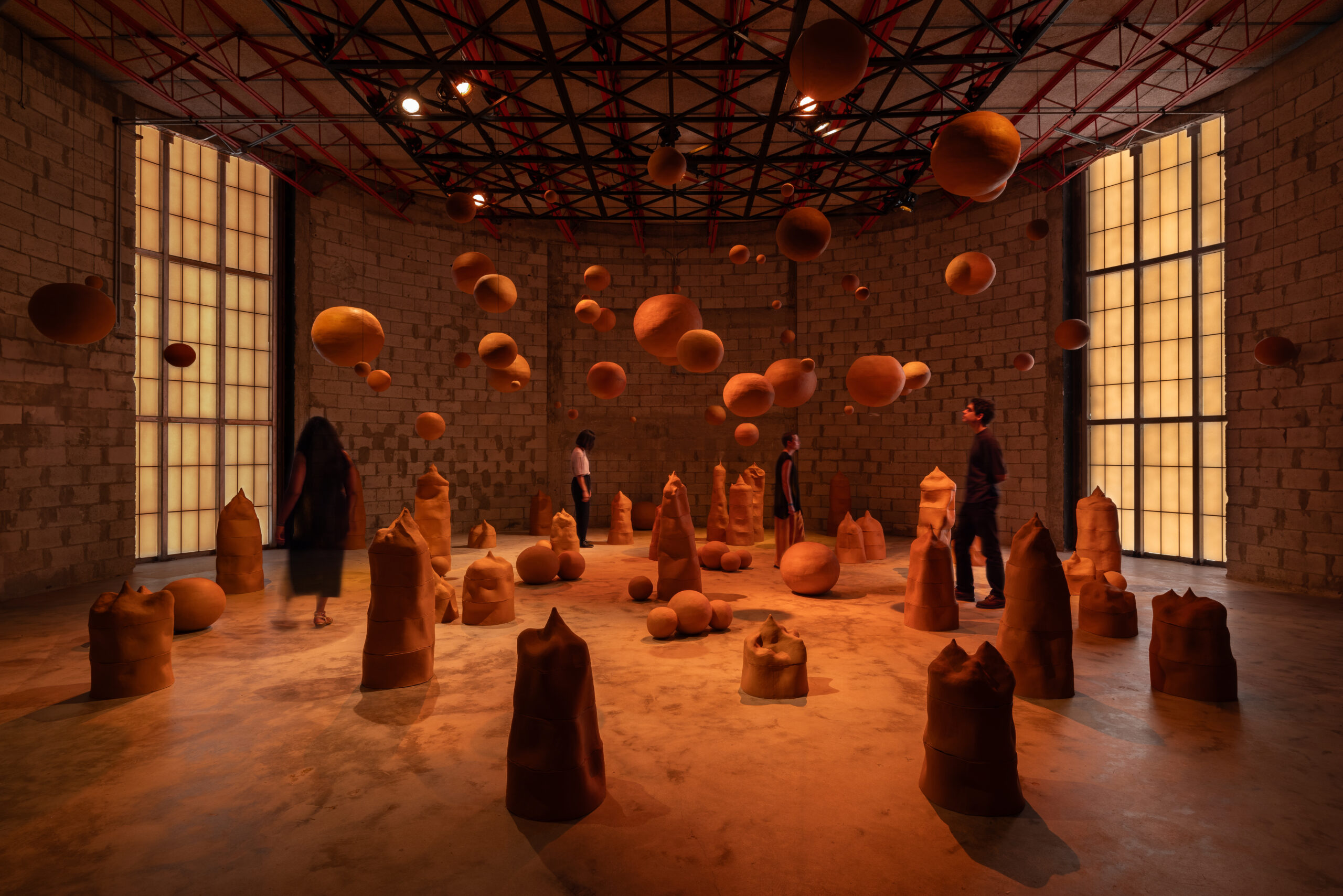
Sallisa Rosa’s whirlwind art trajectory is the stuff of dreams. Six years ago on a whim, the Goiânia, Brazil-born communications graduate decided to apply to be part of an exhibition about Rio de Janeiro’s indigenous roots at the Museu de Arte do Rio. Her epic acceptance, which saw her create a structure challenging notions of indigenous housing as primitive, ignited her rapid ascension. She has since had a solo show in the same city just four years later; exhibited works in Shanghai, London, New York, and Geneva; and been accepted into the prestigious Rijksakademie in Amsterdam, where she is currently an artist-in-residence through 2025.
“I feel that I communicate better when my artworks are mediating the process than when I’m talking,” the 37-year-artist tells Elephant. Indeed, Rosa’s practice, which spans photography, video, performance, painting, and sculpture, has clearly resonated, thanks to her innate ability to infuse her art with profound messages about identity and belonging. Rosa’s latest work — and most ambitious project yet — tackles memories, both personal and collective. Debuting during Miami Art Week and on view through 17 December, Topography of Memory marks Rosa’s first U.S. solo show and installation made entirely of ceramics. Commissioned by Audemars Piguet Contemporary (the brand’s dedicated art programme) for the Collins Park Rotunda, the work will travel to the Pinacoteca de São Paulo from 16 March through 28 July 2024, making it the platform’s inaugural exhibition of a commissioned work in Brazil. Rosa is also celebrating her first gallery representation with A Gentil Carioca, based in São Paulo, who dedicated its Art Basel Miami Beach Kabinett to the artist’s ceramics, watercolours, and more.
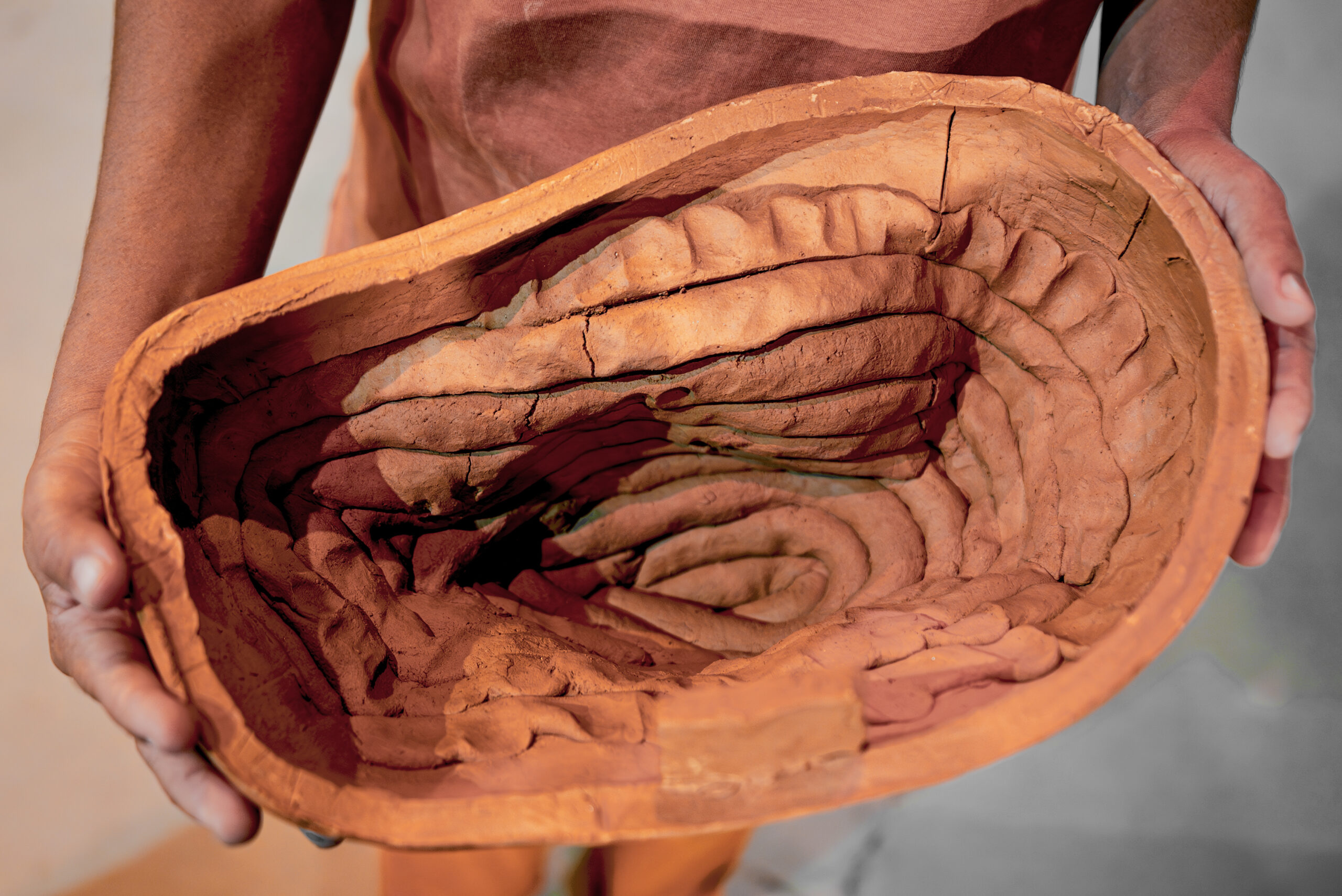
“When Thiago presented Sallisa’s practice to us, we knew she was at the beginning of her career, but we could see immense potential,” Audemars Piguet Contemporary curator Denis Pernet tells Elephant of Topography of Memory’s guest curator, Thiago de Paula Souza. Originally from São Paulo, the curator is currently based in Gothenburg, Sweden, where he is pursuing his Ph.D. Since 2012, Audemars Piguet Contemporary has commissioned works by more than 20 international artists who are encouraged to realise projects on a larger scale or new format. “Sallisa had already produced work at quite a big scale, so we asked if she’d be interested in doing something even more immersive,” adds Pernet. “We are very interested in environments where people can experience and connect to art.”
This spring, Audemars Piguet Contemporary commissioned Berlin based artists Petrit Halilaj and Alvaro Urbano to fill a 9th-century deconsecrated church in Venice with more than 30 metallic creatures to illustrate both the harmonious and incongruous relationships between species. Given that the Metropolitan Museum of Art recently announced Halilaj will conceive its coveted Rooftop Garden Commission for 2024, Audemars Piguet Contemporary may just be foreshadowing Rosa’s own art-world stardom.
Rosa began to think more deeply about how memories are stored and transmitted when her grandma was diagnosed with Alzheimer’s two years ago. Topography of Memory builds on her 2022 solo show at the Museu de Arte Moderna do Rio de Janeiro titled after her grandmother América, who was born on 12 October, the day Christopher Columbus invaded the New World. For the exhibition, Rosa constructed large tree trunks of adobe that appeared to grow through the roof; the roots surrounded by a ceramic urn and 35 pots, symbolising her ancestry, grandmother, and own age.
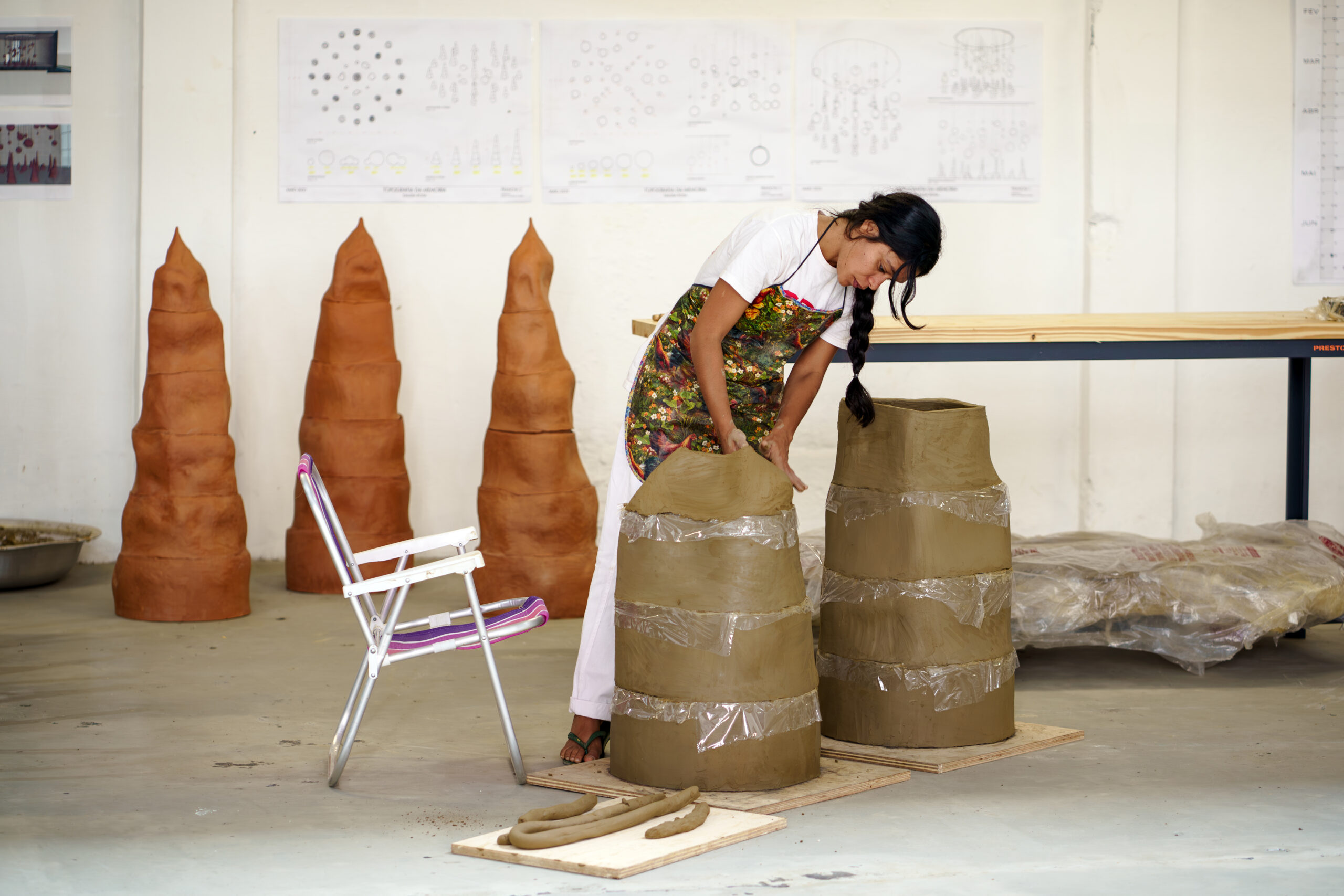
For her latest installation, Rosa decided to return to clay because she is enthralled by “the intimacy with earth” and the concept of land as an ancestral resource. “Earth is a place of memory,” she says. “If we collect a piece of land or soil, it’s possible to gather information about who was living there.” Thus, the mission of Topography of Memory’s ceramics is twofold: to serve as a receptacle for Rosa’s familial memories, and to demonstrate a larger notion of reclaiming territory through the creation of a “fictional landscape,” as she describes. Rosa’s process entails “programming the clay,” meaning as she hand-coils each piece, she reflects on facts about her family and herself, which are then stored in the sculpture.
Rosa’s process is intentionally humble and hands on. She proudly works with artisans in the city of Itaboraí, one hour outside of Rio de Janeiro and known for its rich ceramic tradition. “It’s really special for me to collaborate with them because they know all about nature and where to find the clay, which they help me source and collect,” says Rosa. “When I clean the clay, I have this emotional sensation in my own body,” says Rosa, who vastly prefers removing rocks, plastic, and debris from found natural materials than buying them ready to go in a store. Further connecting her work to the earth, each of Rosa’s sculptures is fired in an 800-degree-celsius kiln in an underground pit. The resulting ceramics’ imperfect marks and subtle discolouration are something close observers will appreciate when walking through the installation.
Escaping the glaring Florida sunshine and stepping past curtains into the intimate rotunda, the first impression may be of entering Mars. Filtered through an amber light “to create a more theatrical ambience,” notes Rosa, the environment is composed of spherical “earth bubbles” suspended from the ceiling and “stalagmite totems” growing out of the floor — all vary in size but share a natural, reddish-brown hue. The dark, contemplative environment provides the inviting, cave-like “cocoon” atmosphere that has quickly become a Rosa signature.
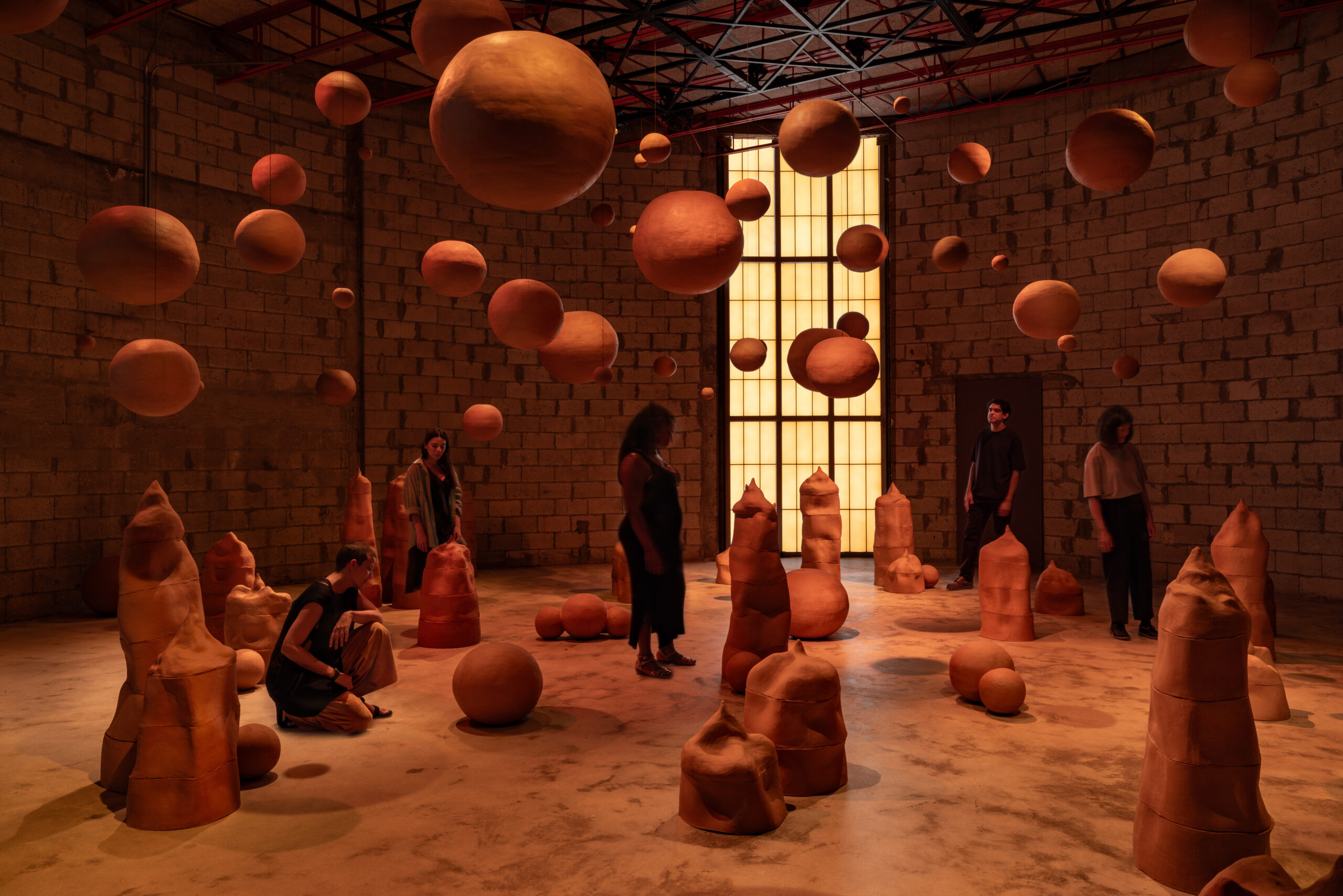
Pernet praises Rosa’s experimentation and “philosophical approach to social engagement,” which has included participatory works, such as planting a cassava garden with 100 strangers during a past residency: “She has this great sense of art being a mediator between the natural environment, individuals, and animals.” Meanwhile, De Paula Souza is especially inspired by Rosa’s “seriousness” yet “openness” when it comes to collaborating with those outside of her field. Rosa’s team includes a lighting designer who comes from theatre, an architect who specialises in constructing with sustainable materials like bamboo, and a ceramicist with a more utilitarian object-based background. “Usually exhibitions are white cubes, but by working with people who don’t come from museums or the contemporary art world, I can create an atmosphere which is really different,” says Rosa of her motley crew.
Just like with her assistants, whom people originally told her she was “crazy” for hiring, Rosa refuses to be boxed in, especially in regards to her indigenous heritage. “Sometimes when an artist puts their identity upfront at the first moment, everything becomes about it,” she says. “Yes, I talk about ‘territories’ and ‘colonialism,’ but I don’t need to be didactical or teach people about these things. I feel that my work is strong enough to go beyond this.”
Likewise, while Rosa feels a deep sense of pride for her native country, she refuses to be complacent — hence her move to Amsterdam, where she is enjoying experimenting with new materials. “There is this interesting movement in her practice to not be an artist whose work is only connected to Brazil,” says De Paula Souza on Rosa’s evolution. “She’s trying to figure out what happens with her practice when she’s in a new home.” Time will tell where Rosa will plant new roots, but based on her five-year career thus far, they will undoubtedly spread quickly.
Words by Stephanie Sporn
